The Comprehensive Guide to Single Storey Extension Costs in 2023
So, you’re contemplating a single storey extension for your home in 2023. Whether you’re thinking of enlarging your kitchen, creating a new living area, or simply boosting your property’s value, one question looms large: “What is the average price for single storey extension in 2023?”
Understanding the financial aspect is pivotal before embarking on this venture. The cost spectrum is broad, influenced by variables like location, materials, and design. In this guide, we’ll dissect all the elements affecting the cost of single storey extension. We’ll also offer a 2023 cost guide to aid your planning.
Whether you’re eyeing a kitchen or side extension, this guide aims to arm you with the knowledge to make an informed choice. We’ll cover cost per square metre, a prevalent metric for estimating build costs, and discuss how to add value to your home through your extension.
What is a Single Storey Extension?
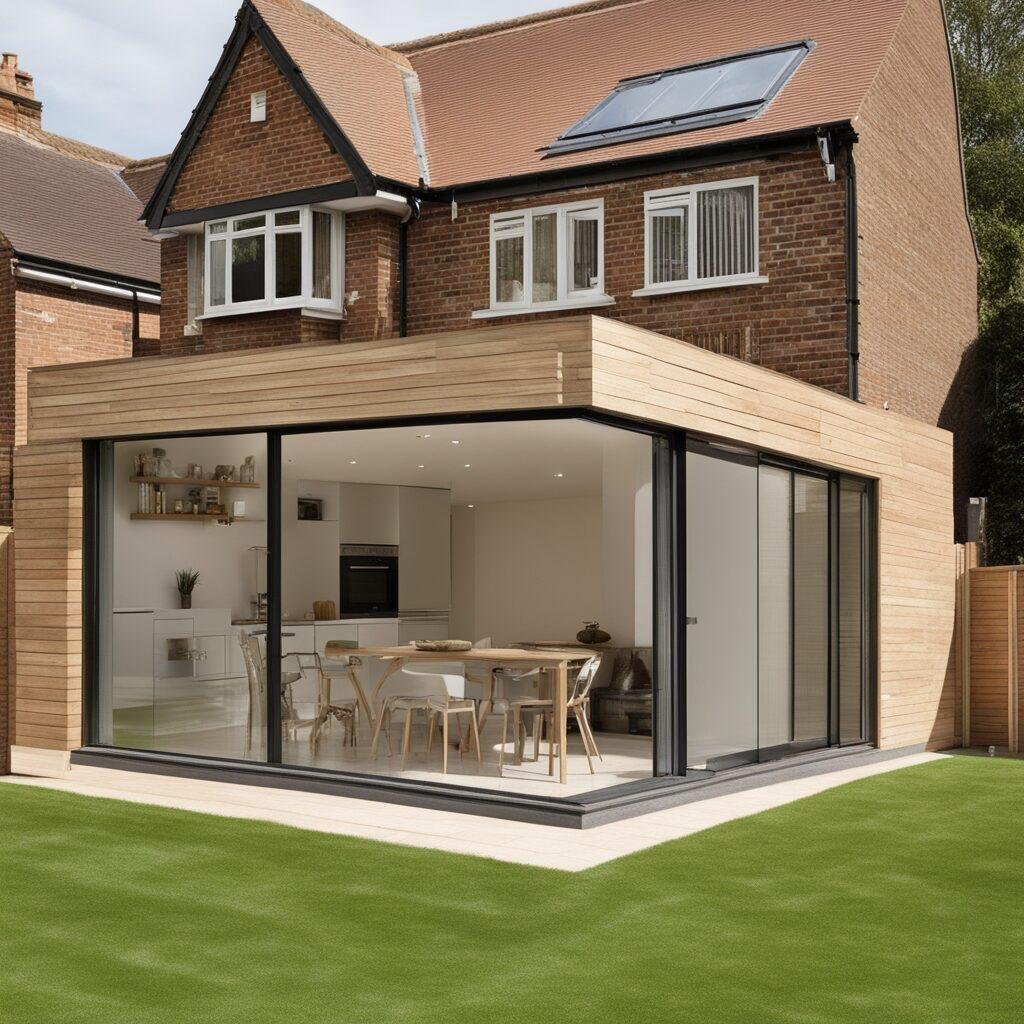

A single-storey extension is a straightforward method to expand your living space, especially when compared to a double-storey extension. It involves adding a one-level structure to your existing home. The benefits are numerous: it’s generally simpler and less costly than a double-storey extension, and it offers versatility in terms of purpose.
However, it’s not all rosy. The cost per square metre is often higher for single-storey extensions because you’re not leveraging the foundation and roof, which are significant cost elements. Also, you may be constrained by the available ground space.
The decision between a single and double-storey extension hinges on your property size, budget, and needs. If simplicity and lower costs appeal to you, a single-storey extension is your go-to. But if you’re after more space and are prepared for a complex process, a double-storey extension might offer more value.
Factors That Affect the Cost of a Single Storey Extension
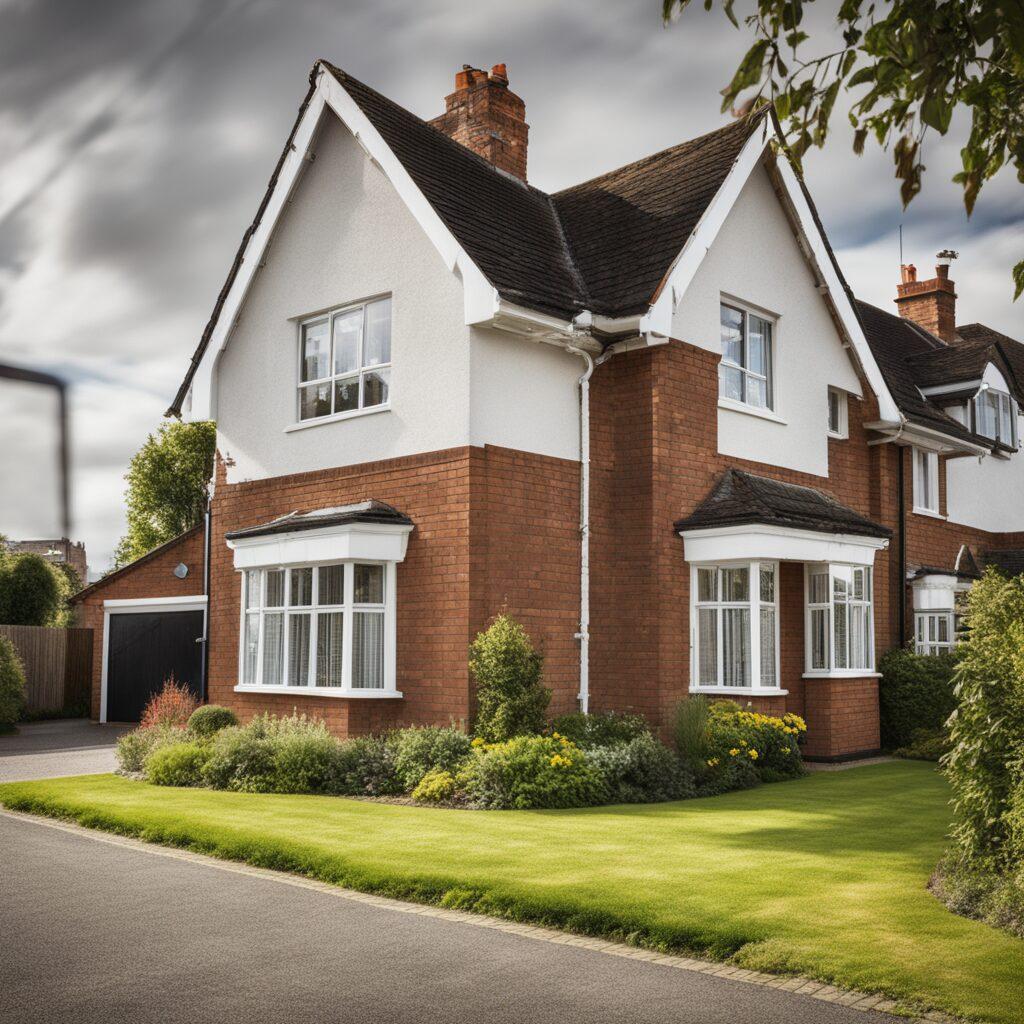

The cost of building a single-storey extension in 2023 is influenced by multiple variables such as material choices, labor costs, and location. Understanding these can help you budget accurately and identify cost-saving opportunities. Here’s a breakdown:
- Material Choices: High-end materials like hardwood will inflate the cost, while budget friendly options like laminate offer affordability.
- Labor Costs: This includes fees for professionals like builders, architects, and possibly structural engineers.
- Location: Costs are generally higher in regions like London due to elevated labor costs and property values.
- Design Complexity: A simple design will be less costly than a complex one with multiple windows or intricate architectural features.
- Structural Integrity: Ensuring your extension is structurally sound may require additional assessments and robust materials, affecting the cost.
- Additional Features: Luxury features like skylights or underfloor heating will also add to the cost.
By grasping these factors, you can plan your budget effectively and make informed decisions, whether you’re considering a modest or a grand extension.
How Much Does a Single Storey Extension Cost in 2023?
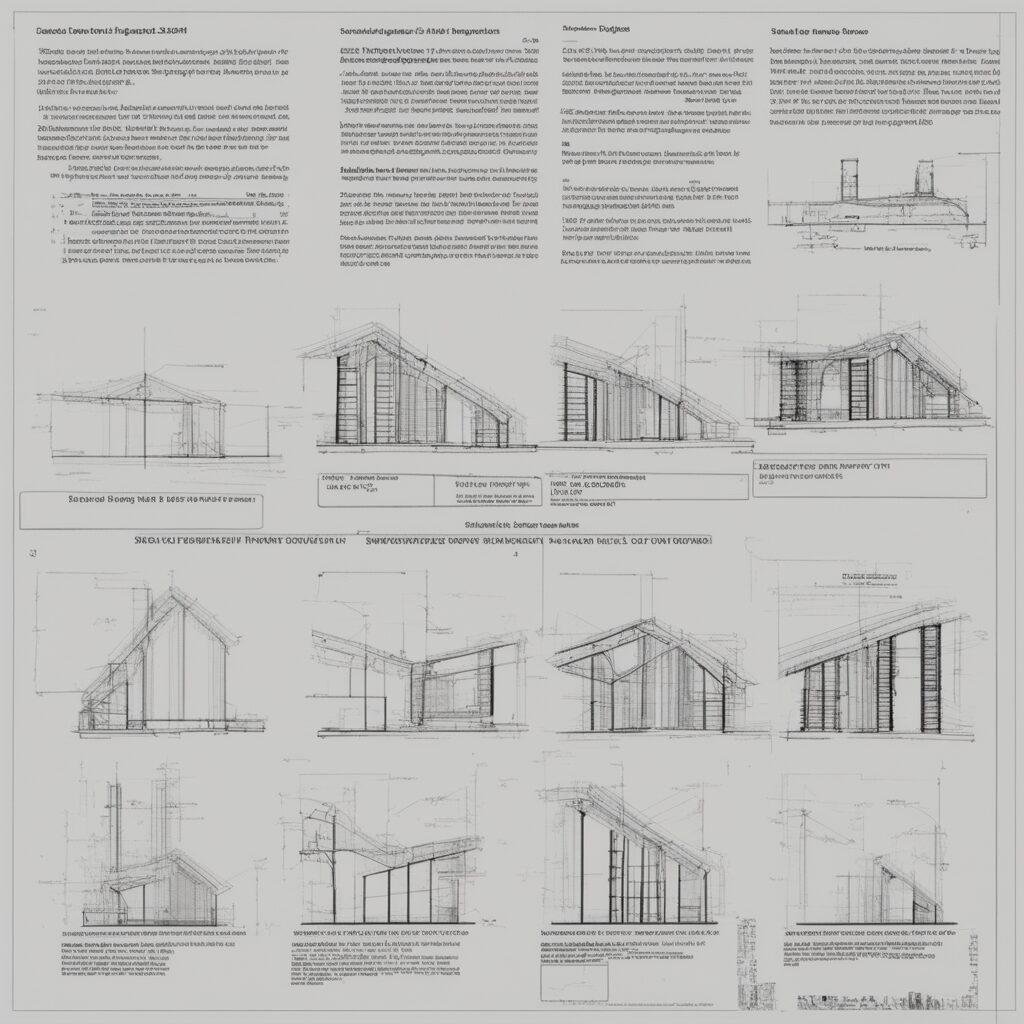

If you’re planning to extend your home this year, you’re likely wondering about the average cost per square metre for a single storey extension in 2023. While it’s challenging to provide an exact figure due to the various factors we’ve discussed, we can offer some general guidelines.
Cost Per Square Metre
The cost per square metre is a common metric used to estimate the build cost of an extension. In 2023, the average cost per square metre for a basic single storey extension ranges from £1,000 to £3,000. However, this can go up to £4,000 or more for high-end finishes and features.
Overall Cost
The overall cost of your extension project will depend on the size and complexity of the build. For a simple, small-scale extension, you might be looking at a total cost of around £20,000 to £30,000. On the other hand, a larger, more complex project could cost around £50,000 or more.
Trends Compared to Past Years
It’s worth noting that extension costs in 2023 have seen a slight increase compared to previous years. This is due to inflation, increased labor costs, and the rising price of materials. Therefore, if you’re working with a tight budget, it’s crucial to include the cost of potential price hikes in your planning.
Cost Variations by Region
As mentioned earlier, the cost of a single storey extension can vary significantly depending on your location. For instance, you might pay up to 20% more if you’re in London compared to other parts of the UK.
By understanding these cost elements, you can better calculate your extension budget and even find ways to reduce the cost. Whether you’re looking to add a single room or a more substantial space, having a clear picture of the cost of building an extension is essential for a successful project.
Breakdown of Single Storey Extension Costs


Let’s talk numbers. One of the most pressing questions for anyone considering the services of a structural engineer is, “How much is this going to cost me?” The structural engineer cost can vary widely based on several factors, and it’s crucial to have a ballpark figure in mind to budget effectively
Construction Costs
The bulk of your budget will go into the actual construction of the single storey extension. This includes the cost of materials, labor, and any machinery required. On average, construction costs can range from £10,000 to £25,000, depending on the size of the extension and the materials used.
Architect Fees
Unless you’re an expert in design and planning, you’ll likely need to hire an architect to draw up the plans for your extension. This can cost between £1,000 and £3,000, depending on the complexity of the design.
Structural Engineer Fees
Essential for ensuring structural integrity, these fees can vary from £500 to £2,000.
Permits and Legal Fees
Before you can build an extension, you’ll need to secure various permits and possibly pay legal fees. This can include the cost of planning permission, building regulations approval, and any other local authority fees. These usually amount to around £500 to £1,500.
Additional Features or Customizations
If you’re looking to add value to your home, you might consider additional features like underfloor heating, high-end finishes, or custom cabinetry. These can significantly affect the overall cost, with prices ranging from £2,000 to £10,000 or more.
Cost Table For Easy Reference
| Expense Category | Estimated Cost | Could Affect Overall Cost By |
|---|---|---|
| Construction | £10,000 – £25,000 | 60-70% |
| Architect Fees | £1,000 – £3,000 | 5-10% |
| Structural Engineer Fees | £500 – £2,000 | 2-5% |
| Permits and Legal Fees | £500 – £1,500 | 2-5% |
| Additional Features | £2,000 – £10,000 | 10-20% |
By understanding this breakdown, you can better manage your budget and even find potential ways to reduce the cost. For example, if you find that architect fees are taking up a significant portion of your budget, you might consider using a pre-designed plan to cut costs.
How to Build a Single Storey Extension


So, you’ve decided to take the plunge and build a single storey extension. Congratulations! Extending your home is an exciting venture, but it’s also a complex process that requires careful planning and execution. Here’s a step-by-step guide to help you navigate the journey from concept to completion.
Planning Phase
- Budgeting: Determine how much does an extension cost and set a realistic budget. Include a contingency fund for unexpected expenses.
- Design: Work with an architect to create the plans for your extension. Ensure the design aligns with your budget and meets all local building codes.
- Permits: Apply for all necessary permits, including planning permission and building regulations approval. This is crucial to avoid legal issues later on.
Construction Phase
- Hiring Contractors: Choose reputable professionals to carry out the construction. Make sure to get multiple quotes to find the best deal.
- Site Preparation: Before construction begins, the site will need to be prepared. This may include clearing the land, setting up scaffolding, and other preliminary tasks.
- Foundation and Structure: The first major step in construction is laying the foundation and building the structural framework. This is where the structural integrity of your extension comes into play.
- Roofing and Walls: Once the structure is up, the roofing and walls are added. Material choices here can significantly affect the overall cost.
- Utilities: Electrical wiring, plumbing, and other utilities are installed.
- Finishing Touches: This includes painting, flooring, and installing fixtures and fittings.
Final Inspection and Handover
- Inspection: Before the extension is considered complete, it will need to pass various inspections to ensure it meets all building codes and regulations.
- Handover: Once everything is approved, the extension is officially yours to enjoy!
By following these steps, you’ll be well on your way to successfully adding an extension to your home. Whether it’s a kitchen extension or a side return extension, proper planning and execution are key to ensuring your project stays on budget and meets your expectations.
Cost-Saving Tips: How to Save Money on a Single Storey Extension
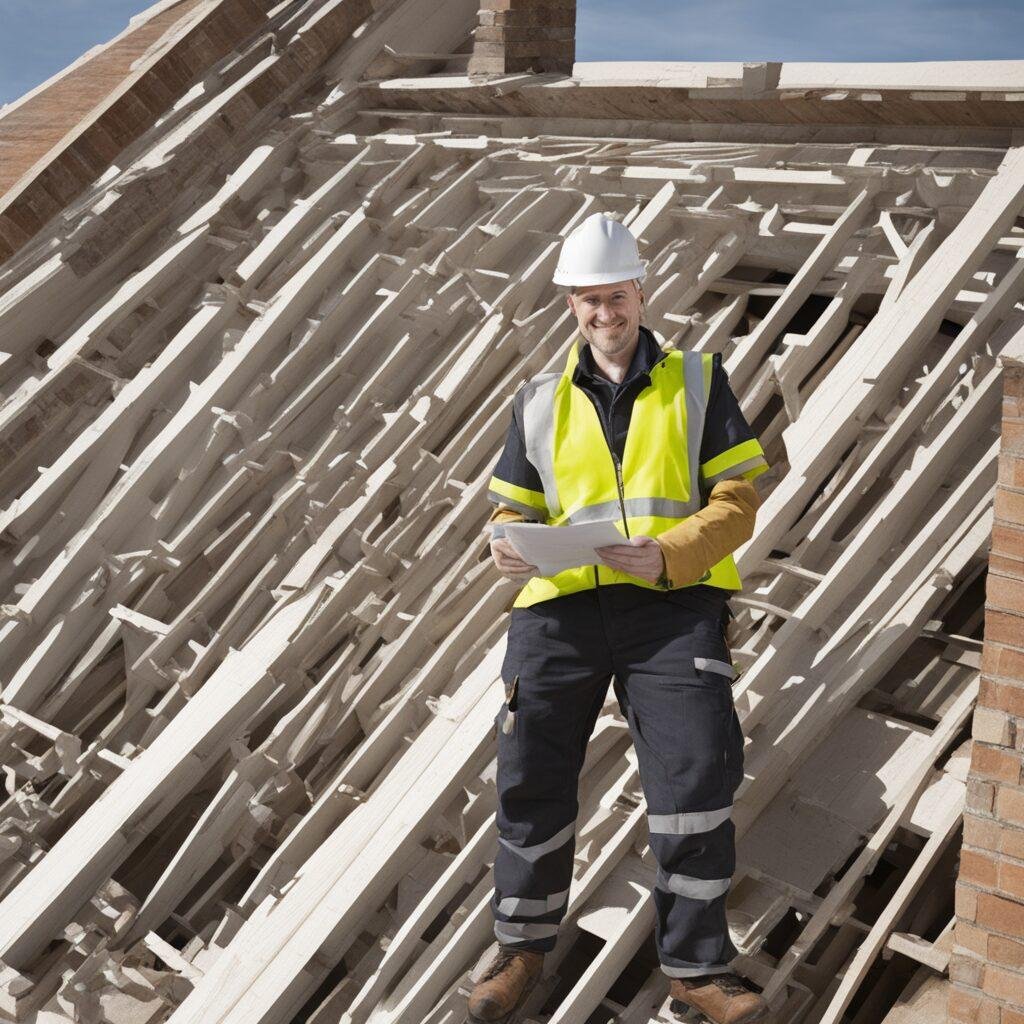

Building an extension is undoubtedly a significant financial undertaking. However, there are several strategies you can employ to reduce the cost without compromising on quality. Here are some cost saving tips to consider:
DIY Where Possible
If you’re handy with tools, consider taking on some of the simpler tasks yourself. For instance, you could handle the painting or even some basic carpentry work. This can help you save money on an extension by reducing labor costs.
Choose Cost-Effective Materials
Opt for materials that offer a good balance between quality and cost. For example, engineered wood can be a more affordable alternative to hardwood but still provide a similar aesthetic.
Negotiate with Contractors
Don’t hesitate to negotiate the price with your contractors. Get multiple quotes and use them as leverage to secure a better deal. Make sure to clarify what the quote includes to avoid any hidden costs later.
Off-Season Construction
Building during the off-season can sometimes be cheaper as contractors are more likely to offer discounts to secure work during quieter periods.
Government Grants or Incentives
Look into any available government grants or incentives that could offset some of the cost of building an extension. Some programs offer financial assistance for energy-efficient home improvements.
Bulk Buying
Purchasing materials in bulk can often secure you a discount. Coordinate with your contractor to see if this is a feasible option for your project.
Reuse and Recycle
Consider reusing materials or fixtures from other parts of your home or purchasing second-hand items. This not only saves money but is also more sustainable.
Plan Efficiently
Efficient planning can help you avoid additional costs. Make sure your design is final before you start to avoid costly changes midway through the project.
Quick Cost-Saving Checklist
- DIY tasks: Identify tasks you can handle yourself.
- Material choices: Opt for cost effective alternatives.
- Quotes: Get multiple and negotiate.
- Season: Consider building during the off-season.
- Grants: Research available financial aids.
- Bulk buying: Purchase materials in bulk for discounts.
- Reuse: Utilize existing materials and fixtures.
By implementing these cost-saving tips, you can significantly reduce the cost of your single storey extension. Remember, the key to a successful extension project is not just about cutting costs but maximizing value.
Types of Single Storey Extensions


When it comes to building a single-storey extension in 2023, you’re not limited to just one style or design; you have options like kitchen extensions, living room extensions, and side extensions. There are various types of single storey extensions to consider, each with its own set of advantages and costs. Let’s delve into some popular options:
Kitchen Extensions
A kitchen extension is one of the most popular types of single storey extensions. It provides extra space for a larger kitchen, perhaps with a dining area or an open-plan design. The cost of a kitchen extension can vary widely depending on the size, materials, and appliances you choose.
Living Room Extensions
Expanding your living room can make your home feel more spacious and comfortable. This type of extension often involves large windows or sliding doors to bring in natural light.
Side Extension
A side extension is built adjacent to an existing structure, usually extending the width of the house. This is a good option if you have unused space on either side of your property.
Side Return Extension
This is a specific type of side extension that fills in the ‘L’-shaped area at the back of some homes, often turning a narrow kitchen into a larger, more functional space.
Rear Extension
A rear extension extends the back of the house, usually into the garden. This is a popular choice for those looking to create an open-plan living space.
Wraparound Extension
A wraparound extension combines a side and rear extension, providing a large amount of additional space. This is often a more complex and costly project but can dramatically transform your home.
Quick Comparison Table
| Type of Extension | Average Cost | Best For |
|---|---|---|
| Kitchen Extension | £20,000-£40,000 | Expanding kitchen space |
| Living Room Extension | £15,000-£30,000 | Larger living area |
| Side Extension | £15,000-£30,000 | Utilizing side space |
| Side Return Extension | £20,000-£40,000 | Expanding narrow kitchens |
| Rear Extension | £20,000-£40,000 | Open-plan living |
| Wraparound Extension | £30,000-£60,000 | Dramatic transformation |
Choosing the right type of extension for your home will depend on various factors, including your needs, the cost of the extension, and the available space. Each type offers its own set of benefits and challenges, so consider your options carefully before making a decision.
Double Storey vs Single Storey: A Cost Comparison


When planning a home extension project in 2023, one of the key decisions you’ll need to make is whether to go for a single storey or double storey extension. Both options have their pros and cons, and your choice will significantly affect the overall cost. Let’s break down the differences:
Cost Implications
Contrary to what you might think, a double storey extension doesn’t necessarily cost twice as much as a single storey. The foundation and roofing costs remain relatively constant, so you’re essentially paying for the additional walls and interior work. On average, a double storey could cost more than a single by about 50-75%.
Space Utilization
A double storey extension provides more living space without increasing the footprint of your home. This is particularly beneficial if you have a smaller plot of land.
Complexity and Duration
A double storey extension is generally more complex and will take longer to complete. This could lead to higher labor costs and a longer period of disruption in your daily life.
Return on Investment (ROI)
While more expensive upfront, a double storey extension often offers a higher ROI. The added space and functionality can significantly add value to your home.
Planning Permission
Double storey extensions are more likely to require planning permission and may have more stringent restrictions, such as height limits and impact on neighbors.
Quick Cost Comparison Table
| Criteria | Single Storey | Double Storey |
|---|---|---|
| Cost | £20,000-£50,000 | £30,000-£75,000 |
| Space | Limited | More |
| Complexity | Lower | Higher |
| Duration | Shorter | Longer |
| ROI | Moderate | Higher |
| Planning Permission | Easier | More challenging |
In summary, the choice between a single or double storey extension will depend on your specific needs, budget, and long-term plans for your home. If you’re looking for a simpler, quicker solution, a single storey might be the way to go. However, if you’re aiming for maximum space and value addition, a double storey could be a more cost-effective option in the long run.
Adding Value to Your Home with a Single Storey Extension
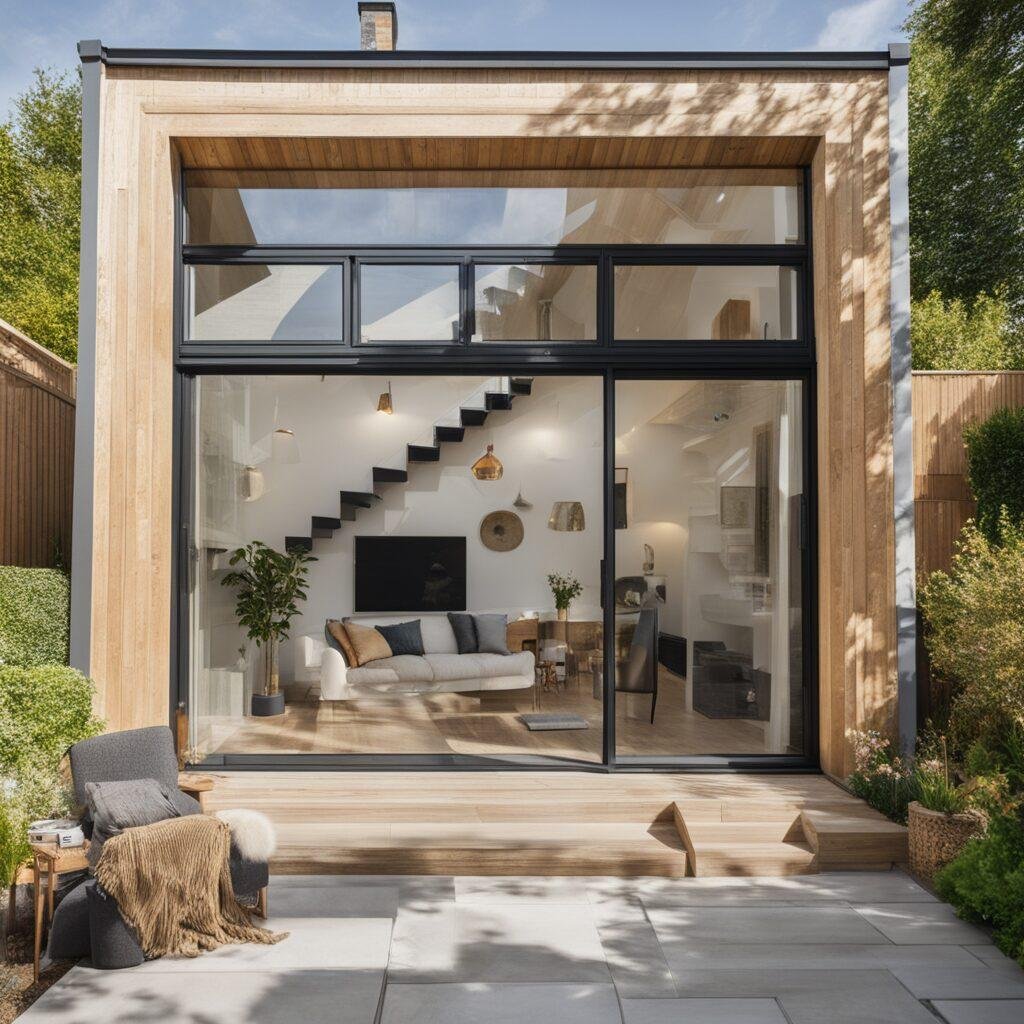

One of the most compelling reasons to build an extension is the potential to add value to your home. A well-executed single storey extension can not only provide you with additional living space but also significantly increase your property’s market value. Here’s how:
Return on Investment (ROI)
The ROI for a single storey extension can vary, but it’s generally considered a good investment. On average, homeowners can expect an ROI of around 50-75%, depending on the quality of the work and the added functionality.
Improved Functionality
Whether it’s a kitchen extension or a new living room, the added space can make your home more functional and appealing to potential buyers.
Aesthetic Appeal
A well-designed extension can enhance the overall look of your home. Modern designs featuring large windows, open-plan spaces, and high-quality materials can make your property more attractive.
Energy Efficiency
Incorporating energy-efficient features like double-glazed windows or solar panels can not only save you money on energy bills but also make your home more appealing to eco-conscious buyers.
Versatility
A versatile space that can serve multiple functions will be more appealing to potential buyers. For example, an extension that can serve as a home office, guest room, or entertainment area is a plus.
Market Trends
Keep an eye on market trends. For instance, open-plan living spaces are currently in demand, so an extension that offers this feature could fetch a higher price.
Quick Tips for Maximizing Value
- Quality Over Quantity: Invest in high-quality materials and craftsmanship to ensure a long-lasting addition that will stand the test of time.
- Consult Professionals: From architects to interior designers, professional advice can help you make choices that will maximize ROI.
- Energy Efficiency: Consider incorporating energy-efficient features.
- Versatility: Design a space that can serve multiple functions.
By carefully planning and executing your single storey extension, you can not only improve your quality of life but also make a sound financial investment. It’s a win-win situation, provided you take the time to do it right.
Final Thoughts


As we wrap up this comprehensive 2023 guide, it’s clear that building a single-storey extension is a significant undertaking, both financially and logistically. However, the benefits often outweigh the challenges. From providing much-needed extra space to potentially increasing the value of your home, an extension can be a transformative project.
Key Takeaways
- Understanding Costs: Knowing the cost of your extension is crucial. Utilize tools like an extension cost calculator and consult professionals for accurate estimates.
- Planning is Paramount: A well-thought-out plan can save you time, money, and a lot of headaches. Make sure to consider all factors, from type of extension to materials and labor costs.
- Cost-Saving Strategies: There are various ways to reduce the cost of your project without compromising on quality. From DIY tasks to smart material choices, every little bit helps.
- Value Addition: A well-executed extension can significantly add value to your home, making it not just a cost but an investment.
Final Checklist
- Set a realistic budget
- Choose the right type of extension
- Secure all necessary permits
- Hire reputable professionals
- Consider cost-saving strategies
- Plan for the unexpected
In conclusion, while the cost of building an extension can be high, the potential rewards are even higher. Whether you’re looking to expand your living space, improve the functionality of your home, or even increase its market value, a single storey extension can help you achieve those goals. Just remember, the key to a successful extension project is thorough planning and informed decision-making.
Your Smart Investment Starts Here at SECalcs
Navigating the complexities of a single storey extension in 2023 can be daunting, but you don’t have to go it alone. At SECalcs, we’re committed to turning your vision into a successful, value-adding reality. Got lingering questions or need personalized advice? Reach out to us. Your financial savvy and the structural integrity of your dream extension are too crucial to leave to chance.
- Sunday: Closed
- Monday - Thursday: 9AM - 7PM
- Friday: 9AM - 5PM
FAQs
The cost of single story extension in the UK can vary significantly depending on various factors such as location and size. In general, you can expect to pay between £1,800 and £3,000 per m². For example, a 20m² extension can cost between £40,000 and £56,000.
The single storey extension cost for a 15 m2 area typically ranges from £17,000 to £18,000. This is an average figure and can vary based on location and materials used.
Given the current market trends, it’s important to note that the cost of building materials is on the rise. Therefore, it’s unlikely that building an extension will be cheaper in 2023.
A budget of £30,000 could be sufficient for a modest extension, particularly if you’re looking at a smaller area of around 20m². The cost of single story extension can vary, so it’s essential to plan carefully.
In 2023, you can only cover half the area of land that is around the original house with a single storey extension. This includes any other types of builds like sheds or outbuildings. The extension cannot be forward of the side elevation or side elevation fronting a highway.
Side extensions are only permitted development where they are less than half the width of the original dwelling. This rule is particularly important to consider when planning your single storey extension cost and design.
Without planning permission, the floor area of any extension above ground level must not exceed 12 square metres for terraced or semi-detached houses and 20 square metres for detached houses.



- Head Office: Corwell Lane, Uxbridge, England, UB8 3DE.
- + (44) 07359 267907
- info@structuralengineercalcs.com


